Stockholm, 29th of September 2018
OPERE VARIE is the creative corpus of the Italian duo Matteo and Ale Cor.
The multiplicity of themes that the duo faces, and the multiplicity of media through which the duo clarifies them, give the name to the multiplicity of expressions, various and together coherent.
OPERE VARIE brings to the emotion through the experience in front of something contemporary and timeless.
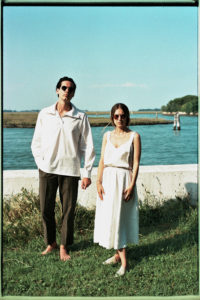
Matteo and Ale Cor @Opere Varie
OPERE VARIE considers the eternal nature of the materials and the most advanced methodologies, to respond to specific wishes through a contemporary and timeless aesthetic. OPERE VARIE offers people to feel part of the story, through the creation of a contemporary and timeless context. OPERE VARIE is like a déjà-vu and at the same time a turning point in the way of dealing with the reality of the 21st century in a contemporary and timeless manner.
OPERE VARIE is that variety between art and architecture.
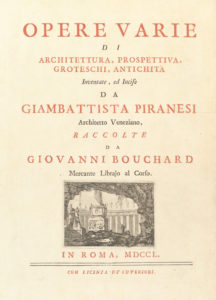
Opere Varie di architettura, prospettiva, grotteschi, antichita; Giambattista Piranesi @Gallica BNF
OPERE VARIE started in 2011 in Venice, and has been developed since. The duo collaborated with the
Gent based Belgian office Architecten De Vylder Vinck Taillieu, where they worked until 2017.
In Belgium, they have been leading several projects and winning competitions such as the new Enoteca dai Tosi in Matera, Italy or the renovation of the Exposition Palace in Charleroi.
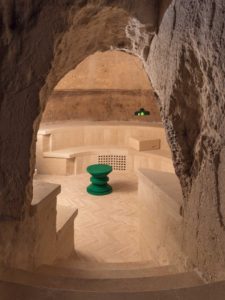
Interior of the wine cellar Enoteca dai Tosi @ Photo Delfino Sisto Legnanis
In 2018, the duo has decided to focus fully on Opera Varie, and in June they relocated temporarily in Italy, where they are currently researching and developed Aria Italiana, a platform gathering Italian inspirations, architecture, arts and crafts from ancient to contemporary.
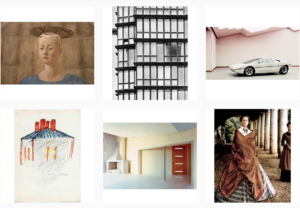
References @ Aria Italiana
We discover the work of Opere Varie with the project “La Ferme du Chaudron”, in collaboration with Bast architects.
The project is a refurbishment of a farm and a house for a new cultural center of bio-agriculture and bio-food in Neerpede, Bruxelles.
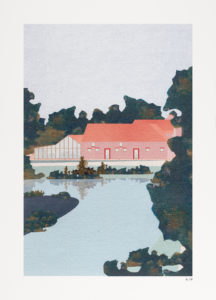
“The pond, the trees, the fields.
The children ride the horse around the pond,
someone walks slowly, watching the reflections of the leaves in the water.
If you are silent, you can hear the birds calling, and towards evening, the crickets sing.
And nearby, some buildings remind us that we are at home, we are in Brussels.”

“Shades of red and pink.
The old bricks of the farm; the new roofs of the farm; the square and the courtyard.
The soil is made with the old roofs of the farm: the old tiles have colored the soil with a red gravel on the outside, and a smooth and shiny coccio pesto on the inside.
Everything is still here at the farm. Everything is so similar. Yet, everything is so different.”
“The intimacy of glass.
For the farmers of the past, the farm was a sheltered space, closed to the outside.
The interior was intimate, it had to heat and protect.
The interior spaces of the new farm will be intimate, warm. But they will also be completely open to the outside, interacting continuously with the environment and the courtyard.
From the inside, they will be well insulated, but with simplicity and natural materials.”
An other project we really liked is a project for a public market in Lisbon, Portugal, they developed in 2014.
 “Uma coluna toda decorada com azulejos. Várias colunas todas decoradas com azulejos.”
“Uma coluna toda decorada com azulejos. Várias colunas todas decoradas com azulejos.”
Can architecture help spontaneity?
Can architecture learn and follow the amazing and popular ability to produce beauty from the simple? We dedicate an open room to the Portuguese wisdom.
A free and open room, to absorb the capacity, typical of the inhabitants of Alfama, to spontaneously live and appropriate the public spaces:
a room that will help them in their practice.
Not a drawing of programs, but of opportunities.
Walls are not required: it needs just air, electricity, water and their ability to adapt the space to always different needs.
For the XVI edition of the Architecture Biennal in Venice in 2018, Opere Varie proposed an intervention for a collective dinner, “Convivo” in Italian, set up on off white tables.
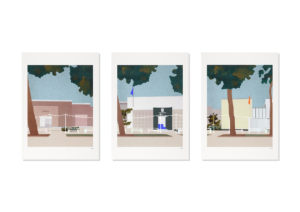 “Convivio.
“Convivio.
It’s almost evening, the table is ready.
They are many tables, to form a single, very long table.
The lights are on. They are many lights, to form a single, very long, thread of light. Our guests have not arrived yet. The wine is ready in the pitchers.
Here they come one by one.
Seen one by one, our guests are all similar. They are the people who live in this world. We invite them to sit together at the table.
Seen one next to the other, our guests are now so different.
Do we want to see them the same or different?
We want to be together, and be different.”
A: Spain.
B: Belgium.
C: Holland.
And finally, one of Opere Varie’s latest production in Venice in the summer of 2018 called Laguna; putting together some references the duo is very attached to.
 *Laguna A: The church of Santa Maria dei Miracoli designed by Lombardo in 1489 in Venice.
*Laguna A: The church of Santa Maria dei Miracoli designed by Lombardo in 1489 in Venice.
*Laguna B: An island lost in the lagoon of Venice.
*Laguna C: Production of the only wine from Venice.

Le città invisibili, Italo Calvino, 1972 first edition, cover René Magritte, The Castle in the Pyrenees, 1959 @ Wikipedia
“Le immagini della memoria, una volta fissate con le parole, si cancellano… Forse Venezia ho paura di perderla tutta in una volta, se ne parlo. O forse parlando d’altre città, l’ho già perduta a poco a poco.”
in Italo Calvino, Le città invisibili, 1972
Visit Opere Varie’s website HERE.
Acquire Opere Varie’s artworks HERE.
Credit: Opere Varie, 2018
Desplans, Stockholm, 2018